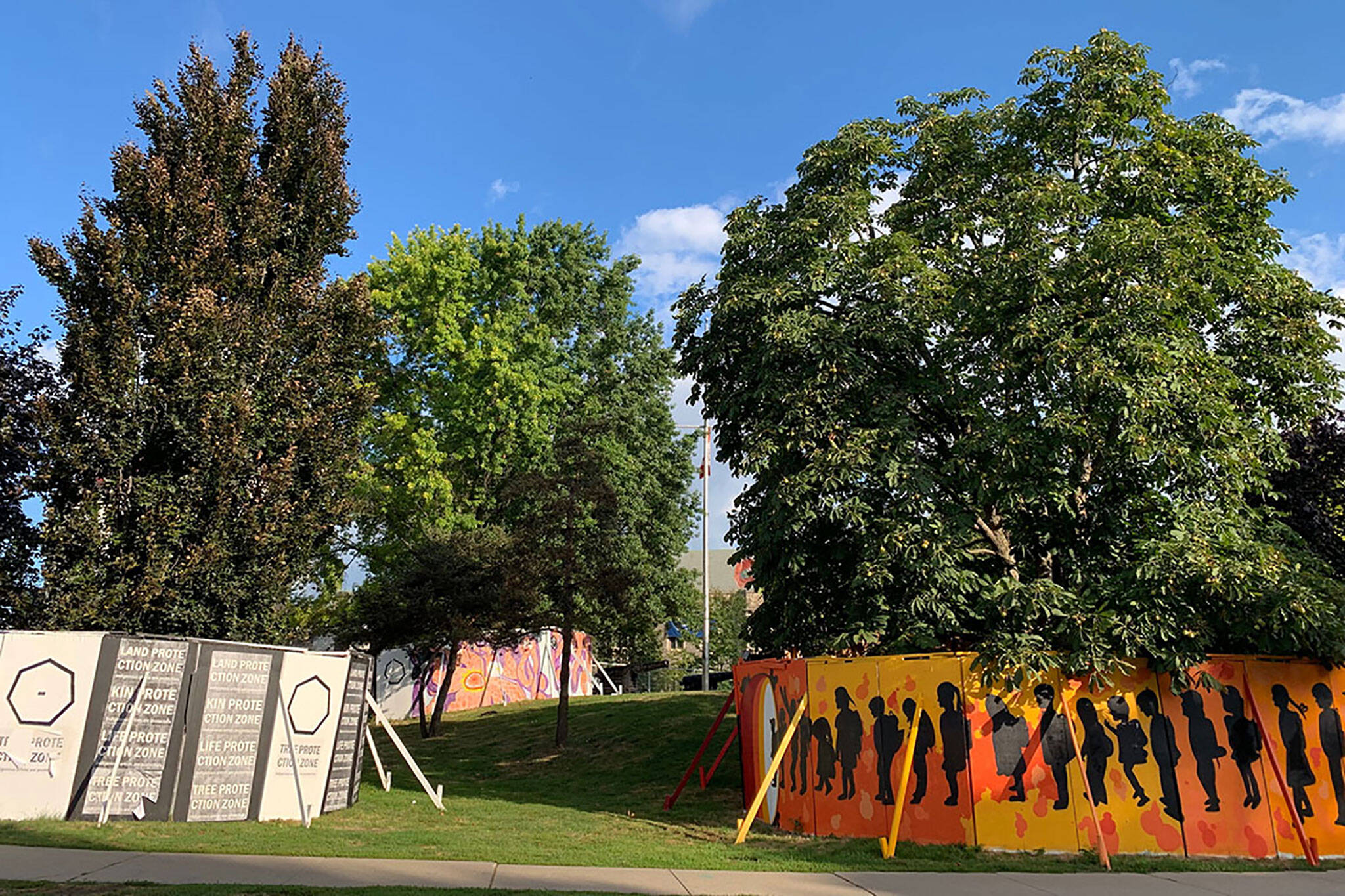
Indigenous culture is livening up this busy University of Toronto construction zone
The University of Toronto's St. George campus is being transformed through a once-in-a-generation revitalization, known as the Landmark Project, that will make the campus both greener and more accessible.
Aside from just improving the campus' look and connectivity, the broader Landmark Project includes a component called the Indigenous Landscape Project, recognizing the Indigenous heritage that long predates the educational institution.
Focused on U of T's outdoor spaces, the Landmark project is already well under construction, but you don't have to wait until the project's 2022 completion to experience some of its cultural elements.
Like any construction zone, these outdoor areas are noisy, dusty messes for now, but a few colourful elements are shining through the mix with playful shots of both colour and culture, while signaling the coming changes.
A familiar feature of construction sites in Toronto has emerged as part of the revitalization, respecting the country's Indigenous culture through the protection zones set up around trees to prevent damage from heavy construction equipment.
But these aren't the typical plywood and plastic orange fencing tree protection zones most are accustomed to. Instead, trees at Hart House Common are being enveloped by protection zones adorned with murals by eight Indigenous artists.
TPZ will feature commissioned works by eight artists considering the preservation of life, water, and kin and how each is linked to tree protection. Follow along to see how the artists and their collaborators transform the hoardings and Hart House Circle! pic.twitter.com/mxTiHruwRf
— Art Museum (@artmuseumuoft) August 23, 2021
"The presence of the Tree Protection Zone installation in the city and on the U of T downtown campus is an important visual declaration about the past, present, and future of this land and the Indigenous peoples who have been stewarding it for generations. Hart House is proud to be part of this inspiring initiative," said John Monahan, Warden of Hart House, who first conceived the plan to reimagine the tree protection zones.
Curated by Mik Migwans and Maria Hupfield, the temporary project has been installed just in time for National Day for Truth and Reconciliation, giving students the chance to engage in wider conversations about the land, while setting the stage for the permanent Indigenous Landscape project's completion next year.
"Cities constantly change at street level; hoardings inform the urban aesthetic and are part of our daily living. By drawing attention to the tree protection zones found on construction sites, this Indigenous-led public art project signals the University of Toronto's support of work by artists who prioritize critical accountability to place, land, and peoples as part of the vibrant energy of the city," says Maria Hupfield, co-curator, of the Tree Protection Zone project.
There are specific reasons to highlight Indigenous on this particular site. Generations before any of these manicured outdoor spaces or even the institution they served ever existed, a waterway that would come to be known by Europeans as Taddle Creek intersected the current site of the St. George campus.
This small creek served as an important gathering place for Indigenous groups, including the Huron-Wendat, the Seneca, and the Mississaugas of the Credit First Nation, centuries before university students would begin to congregate on this land.
In recognition of this past, the Indigenous Landscape project will cover 4,500 square metres of Hart House Green, a plan created by U of T in response to the Truth and Reconciliation Commission of Canada's 2015 Calls to Action.
University of Toronto
Latest Videos
Latest Videos
Join the conversation Load comments







